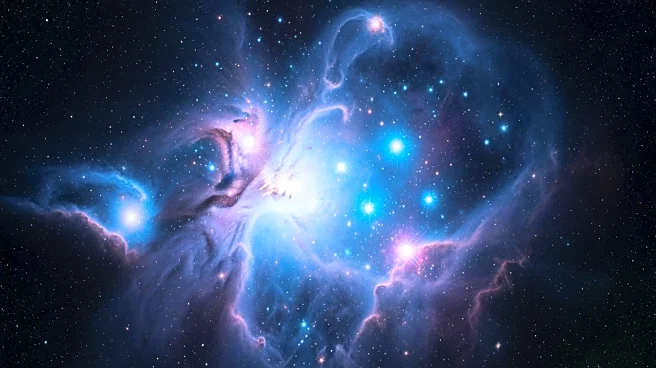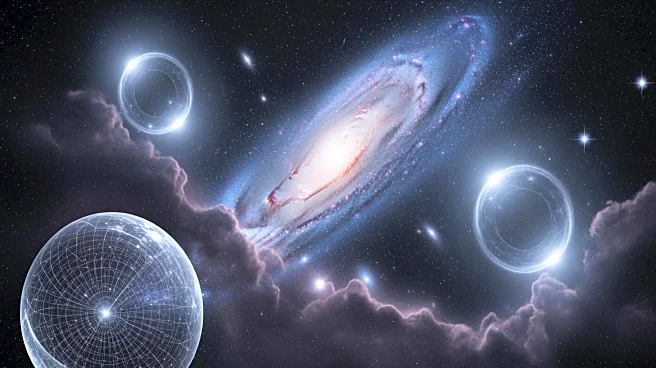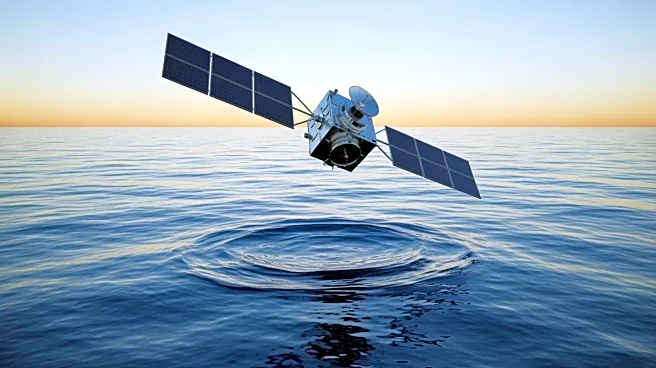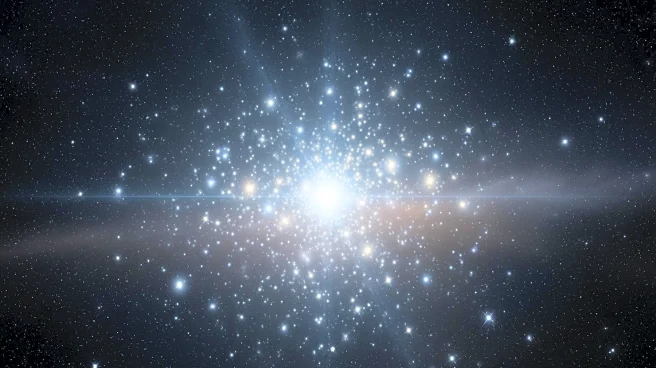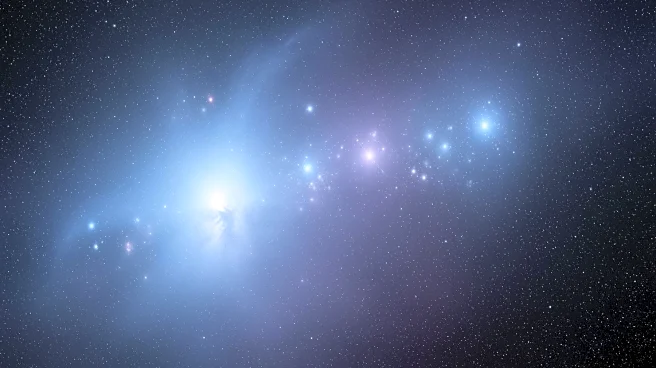What's Happening?
The European Space Agency's Euclid space telescope has recorded data on the LDN 1641 nebula in the Orion constellation. This observation aids in understanding star formation processes in dark clouds and the role
of interstellar gas. Located about 1,300 light-years from Earth, the nebula's characteristics are used to calibrate the telescope's guiding systems. The mission aims to create a comprehensive 3D map of the Universe, tracking billions of galaxies to study dark matter and dark energy. The Euclid telescope collects data on distant galaxies and objects closer to Earth, enhancing our understanding of cosmic processes.
Why It's Important?
The Euclid mission is significant as it seeks to map the Universe in unprecedented detail, providing insights into the influence of dark matter and dark energy on cosmic evolution. Understanding star formation in regions like LDN 1641 can improve the accuracy of astronomical observations and calibrations. This research contributes to the broader scientific goal of deciphering the Universe's structure and the mechanisms driving star formation. The data collected by Euclid will help refine models of cosmic evolution and potentially lead to breakthroughs in astrophysics.
What's Next?
Euclid will continue to gather data, deepening our understanding of dark matter and dark energy's roles in the cosmos. The telescope's ongoing observations will refine its calibration and pointing systems, enabling more precise measurements. Future research may focus on expanding the 3D map of the Universe and exploring other regions for similar insights into star formation and cosmic processes.


